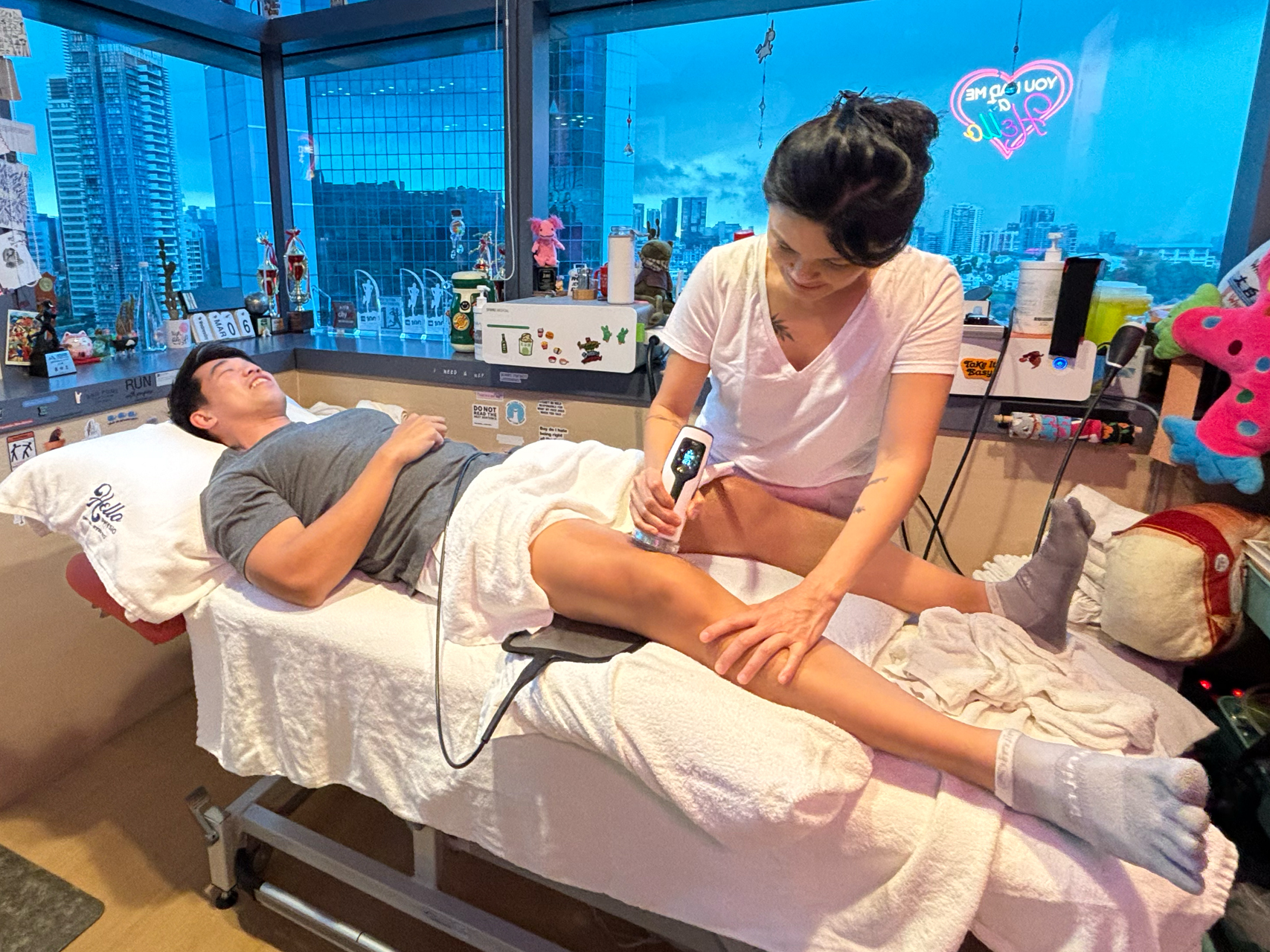Injuries are far from your mind when you’re trying to get your fastest time running. You’re concerned with your breath, control, pace and top speed. That’s what the runner is fixating on: to get as fast as they can go. So, what starts as a little ache following a long run or a fast sprint is often ignored. However, persistent knee pain may indicate patellar tendinopathy, also known as jumper’s knee. Patellar tendinopathy is an overuse injury caused by repetitive stress, particularly in sports that involve jumping or sprinting. This common overuse injury can escalate if ignored.
Pain is your body telling you something is wrong, and pain in the patellar tendon is a sign that something isn’t right. This pain is often felt at the front of the knee, specifically at the front of the kneecap, highlighting the anterior aspect of the knee.
The patella, or kneecap, plays a crucial role in the extensor mechanism of the knee. Pain in this area can indicate problems with the knee’s structures. The pain is typically localized at the attachment of the patellar tendon, and repetitive stress can cause micro tears leading to degeneration of the tendon. Individuals who participate in jumping sports are at a higher risk of developing jumper’s knee.
When diagnosing the condition, it is essential to ask questions about the patient’s activity level, pain onset, and performance to understand the underlying cause better.
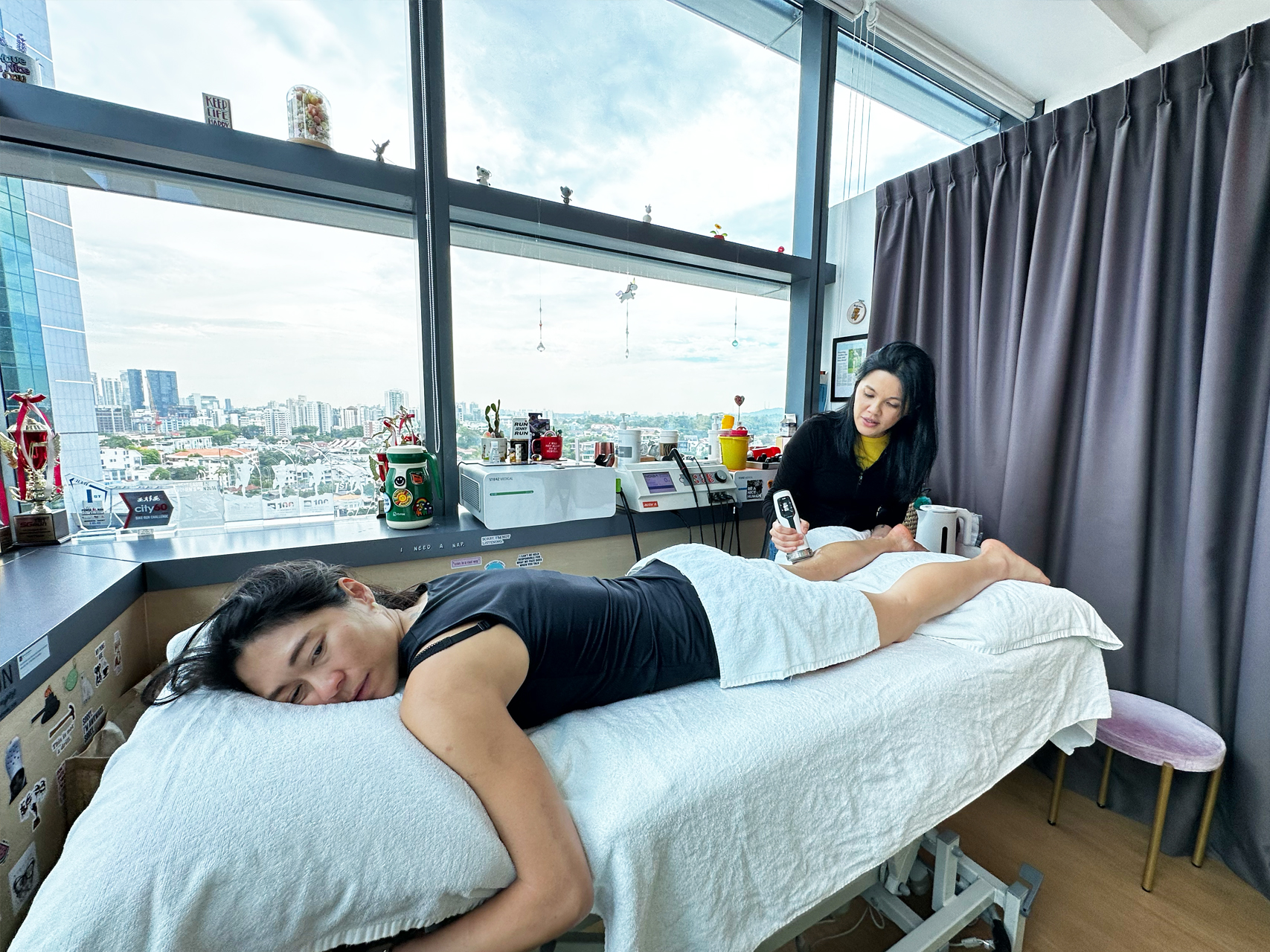
So What Is Jumper’s Knee?
Before we get into the condition, it’s worth understanding precisely what the patellar tendon is. Tendons connect your bones to muscles, and the patellar tendon connects your kneecap to your shinbone. Along with the quadriceps tendon and the patella, this tendon forms the knee extensor mechanism, which straightens the leg and is crucial for activities such as jumping, running, kicking, and any movement that demands your legs move quickly and forcefully. The fat pad, located just below the patellar tendon, also helps cushion and support the knee.
Sometimes, too much movement too fast may be a bad thing. Over time, the patellar tendon can become damaged through repetitive stress. This starts microscopically and can begin as the dull ache mentioned before. Your body senses the damage and responds by rushing to repair it.
However, repeated usage makes it difficult for the body to generate healthy tendon tissue at a fast enough rate. The result? Scar tissue clogs up the tendon, making it stiff and swollen. Though the body is doing its best to help itself, if the runner isn’t resting, the tendon simply can’t recover fast enough, making it rigid and painful.
Patellar tendinitis primarily manifests as pain and tenderness at the base of the kneecap, where the patellar tendon attaches. This discomfort often begins as a mild ache that intensifies with activity, particularly jumping, running, or squatting. The pain is typically sharp and localized, worsening with prolonged physical activity or when climbing stairs. Swelling is common, and it’s not unusual for the knee to feel oddly warm.
Imaging studies, such as an MRI, may reveal increased signal intensity within the patellar tendon, indicating tendon pathology, and in chronic cases, changes in the fat pad, such as the absence of its posterior border.
Without attention or care, the knee joint will begin to feel weak. Not only will bearing weight be complex, but stretching the leg fully will also be challenging. At that state, the tendon may feel thick and, in another strange development, feel like it is split into different nodes when you think the knee with your fingers.
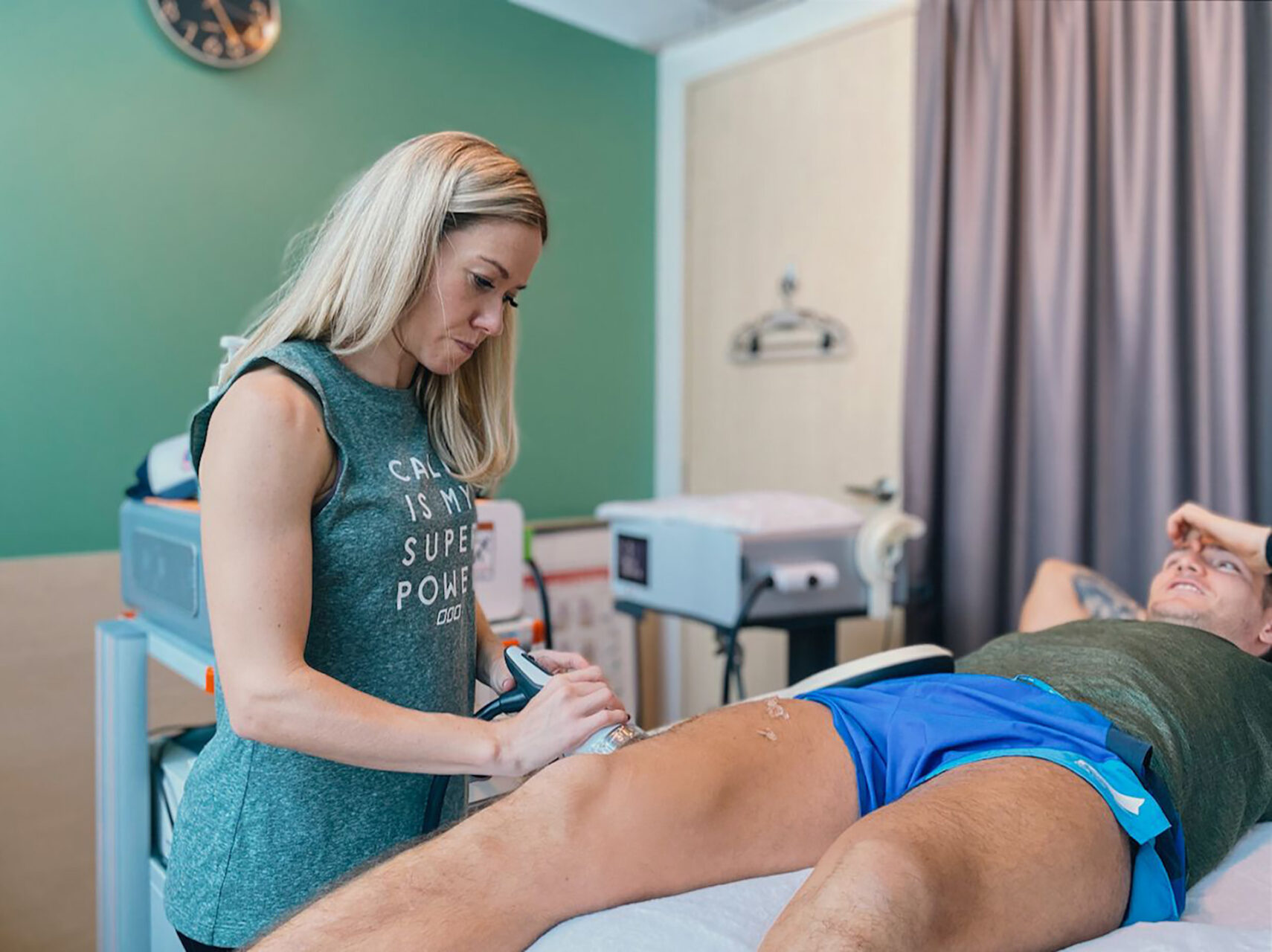
Chronic Patellar Tendinopathy
Patellar tendinopathy refers to pain and inflammation in the patellar tendon, typically due to overuse and stress on the tendon. Chronic patellar tendinopathy, on the other hand, indicates a prolonged, ongoing condition where the tendon has undergone degenerative changes, often accompanied by persistent pain and impaired function. The chronic form suggests that the injury has not healed properly over time and has become a long-term issue.
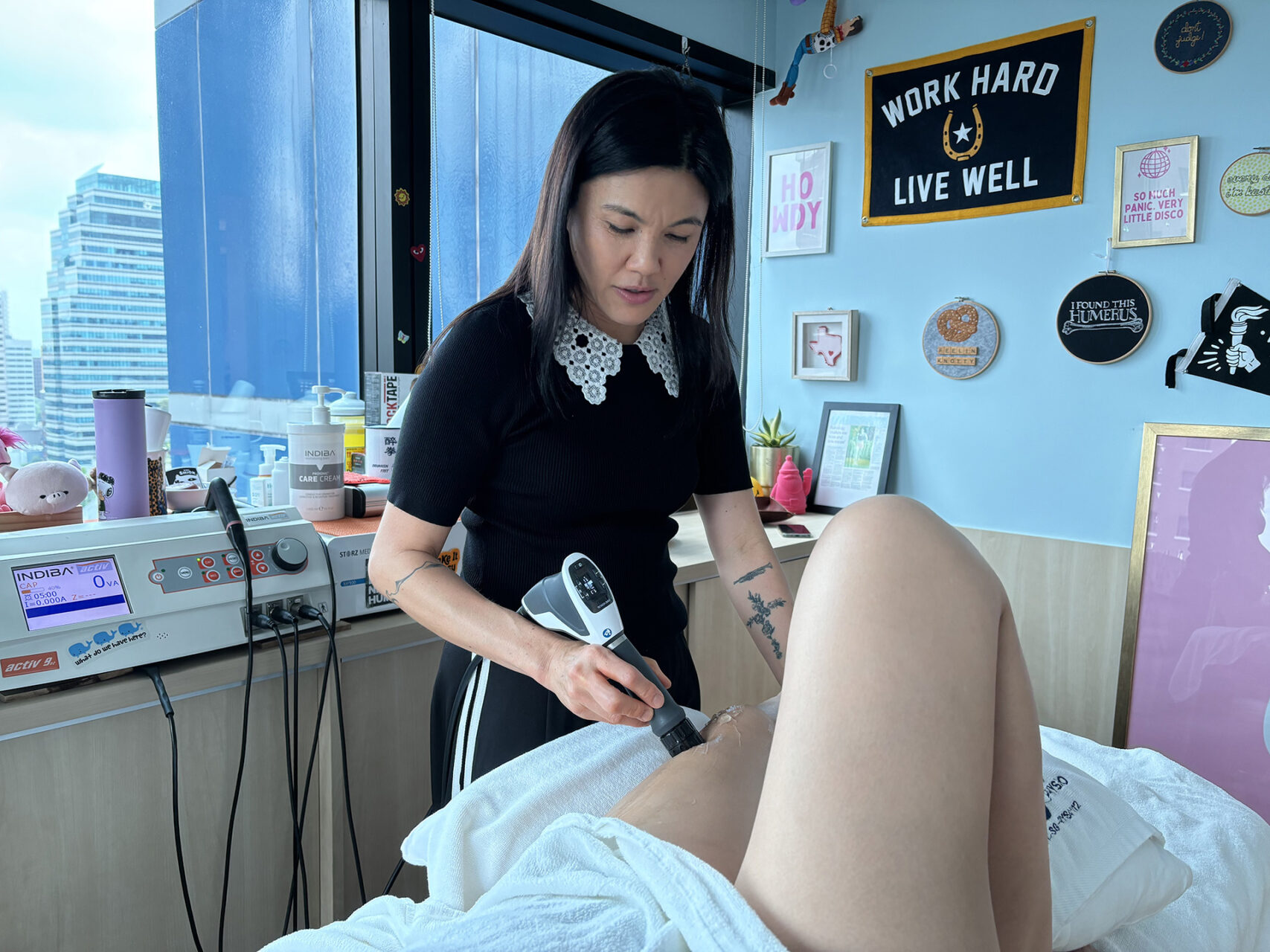
What Can You Do About Patellar Tendon Pain?
Patellar tendon pain may be a problem, but it is not without solutions. The most obvious immediate solution is rest. The problem starts because the athlete’s exercise-to-rest ratio was inadequate. Additional rest can give the body the chance to address the issue.
However, in many cases of patellar tendinopathy, the athlete notices the problem too late and is eager to return to their training regime as soon as possible. In such cases, it is best to consult a physiotherapist who can assess the issue and develop a personalized recovery plan tailored to your specific needs as an athlete. Patient-specific factors, such as medical history, symptom severity, and individual goals, play a crucial role in determining the most effective treatment approach.
Physical therapy restores strength and mobility to the affected knee, and at HelloPhysio, we offer a range of modern techniques that can help break down scar tissue and get your knee back in order.
When returning to training and rehabilitation, it is important to recognize that patellar tendinopathy can significantly impact athletic performance. Monitoring progress and adjusting the patellar tendinopathy rehab plan is essential for optimal recovery.
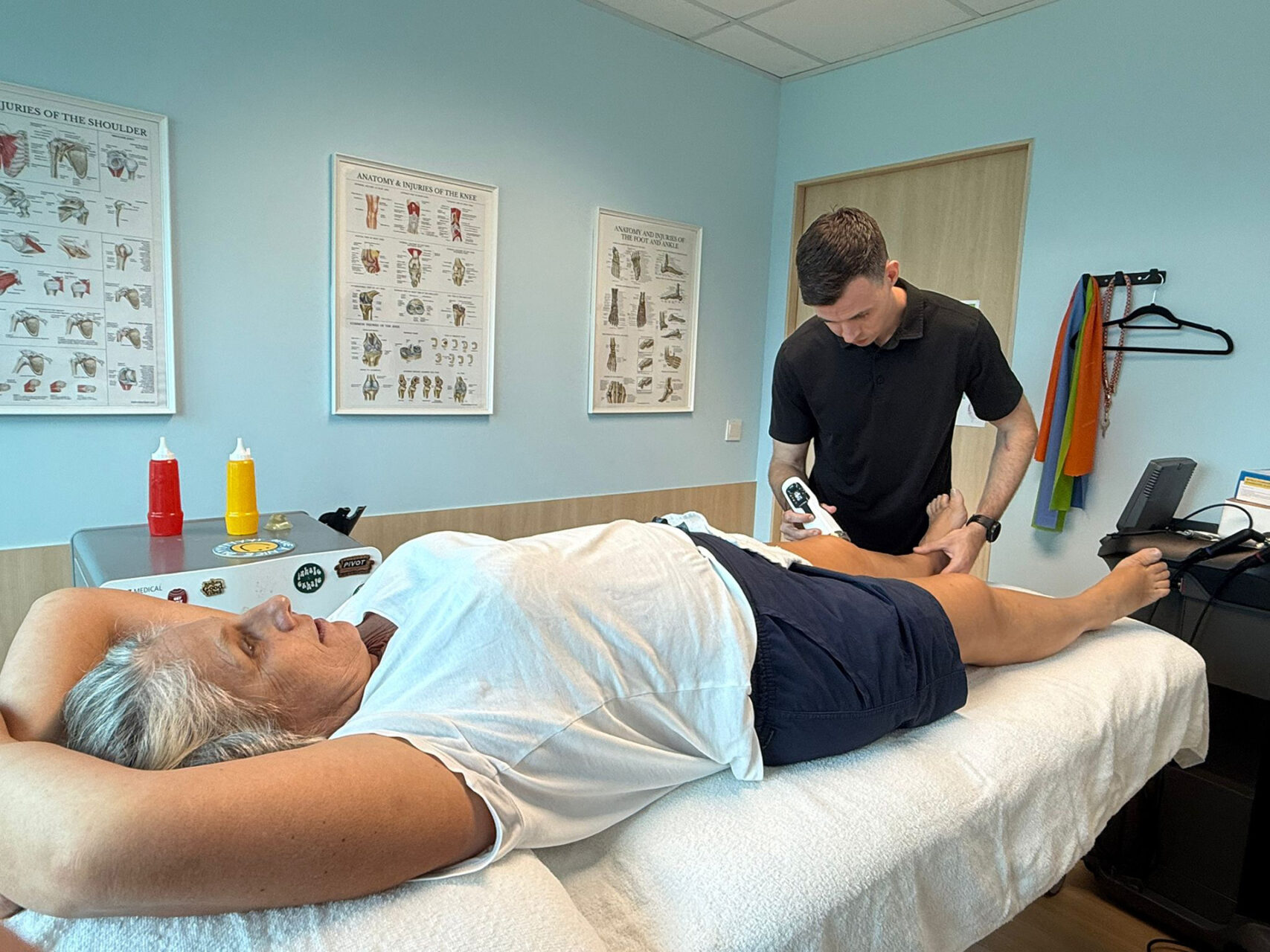
Adjunctive Treatments for Patellar Tendonopathies
One option is INDIBA® Activ Therapy, which uses radiofrequency to deliver energy into the knee to promote cellular biostimulation, increase blood flow, and accelerate tissue repair. This can reduce inflammation, relieve pain and encourage healing.
There’s also Shockwave Therapy, which is not as scary as it sounds. A noninvasive device emits sound waves into the tendon, breaking down scar tissue and improving tendon flexibility. It has also been found to encourage new blood vessel formation, providing your body with more means to send beneficial healing blood to the area.
Another option is Magnetolith EMTT, also known as extracorporeal magnetotransduction therapy, used in conjunction with Shockwave Therapy. Electromagnetic fields in this technique stimulate cellular activity, giving your tendon a helping hand at a microscopic level.
All three of these patellar tendinopathy rehab options are non-invasive, requiring no surgery, and, when used in conjunction with physical therapy, can offer athletes significant relief from patellar tendon pain.
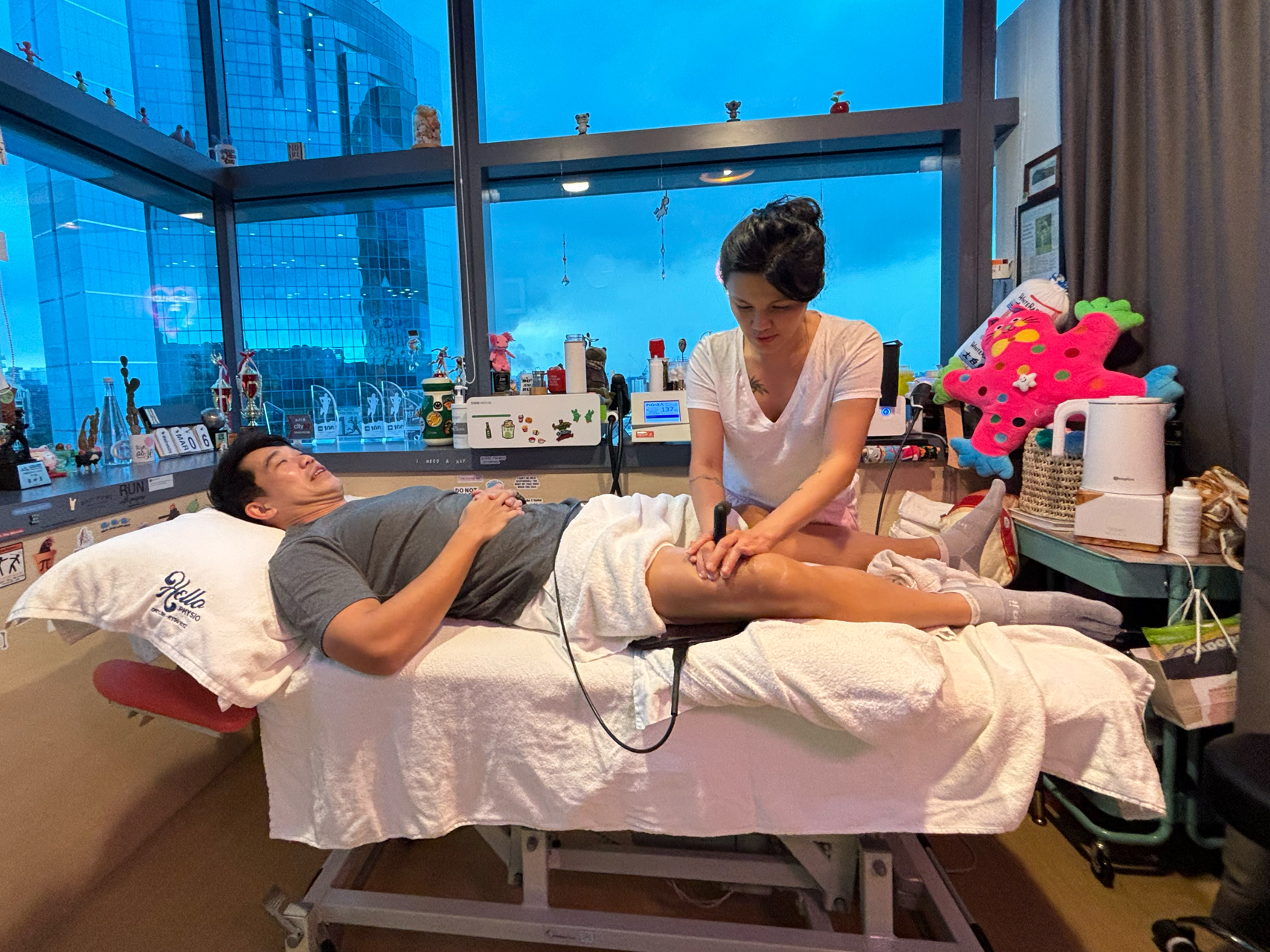
Make an Appointment Today
Patellar tendon pain is best addressed promptly, even though it may feel like it’s slowing down your training regimen. It becomes more challenging to manage as the scar tissue builds up. So, if you’ve been ignoring that persistent ache after every run, make an appointment with HelloPhysio today for early intervention.

